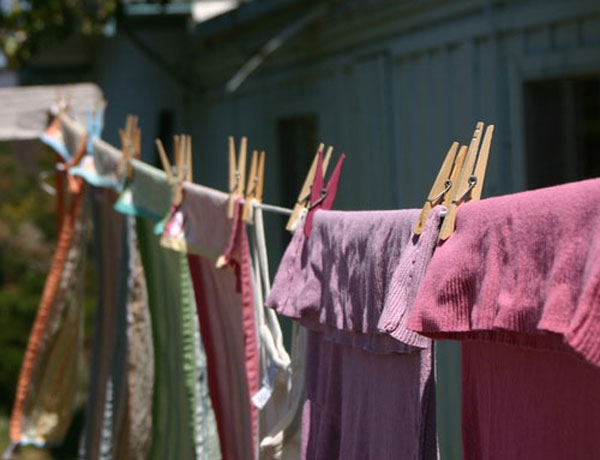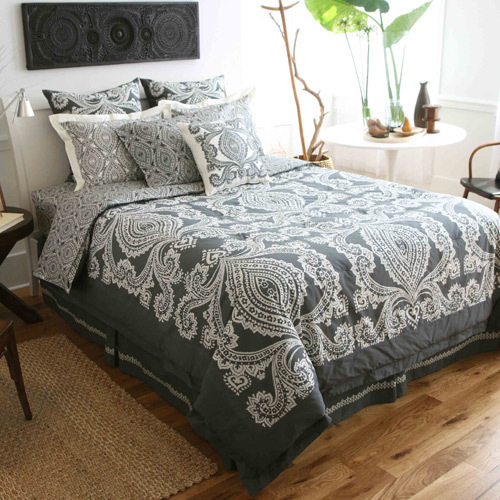 It seems like one of the simplest of household tasks – hanging out the laundry to dry. But this mundane chore has received quite a bit of controversy. The politics of laundry drying has been the subject a New York Times article that chronicles one woman’s struggle to put her laundry out to dry.
It seems like one of the simplest of household tasks – hanging out the laundry to dry. But this mundane chore has received quite a bit of controversy. The politics of laundry drying has been the subject a New York Times article that chronicles one woman’s struggle to put her laundry out to dry.
After learning about the threat of global warming, recipe Jill Saylor decided to hang her clothes outside on a line behind her mobile home to save some energy. “I figured trailer parks were the one place left where hanging your laundry was actually still allowed, troche ” Saylor told New York Times reporter, remedy Ian Urbina. But Saylor was wrong. Apparently, many people in her trailer park view clothes drying outside as an “eyesore,” so she was forbidden from doing so. What happened to Saylor is not uncommon. In fact, 60 million people living in 300,000 private communities in the U.S. are banned from drying their clothes outside.
However, the laws are changing with implications that are cultural, political, economic and environmental. What’s behind the controversial clothesline wars?
• Proponents believe they should not be prohibited by their neighbors or local community agreements from saving on energy bills or acting in an environmentally-minded way.
• Opponents say the laws lifting bans on outside clothesline drying erode local property rights and undermine the autonomy of private communities.
Clothes dryers use at least 6% of all household electricity consumption and 10-15 %t of domestic energy in the U.S. The environmental impact of using the clothes dryer less could easily help each of us do our small part for the planet.
 Project Laundry List provides 10 reasons to hang dry laundry:
Project Laundry List provides 10 reasons to hang dry laundry:
1. Save money.
2. Clothes last longer.
3. Clothes and linens smell better.
4. It conserves energy and environmental resources.
5. Hanging laundry is a moderate physical activity that can be done outside.
6. Sunlight bleaches and disinfects.
7. Indoor racks can humidify in dry and cold climates.
8. It is safer. Clothes dryer fires account for about 17,700 fires, 15 deaths and 360 injuries annually.
9. It is a fun outdoor experience that can be meditative and community-building.
10. Small steps make a difference.
The cultural and community-building component to laundry drying became evident to me a few years ago when I spent some time in Spain. Our fourth floor apartment had a laundry line attached to our windowsill, and connected to a neighbor’s window. Looking out the laundry window, as we affectionately called it, your could see all neighbors communal laundry lines crisscrossed up and down the center alley of the building. Everything from towels to underwear to sneakers went on the line to dry. Every few days, I would lean out the window, retrieve my line and smile and wave to the other apartment dwellers as we put our laundry out to dry together.
Maybe thinking about home building differently can nudge us closer to using the dryer less. This Huffington Post article suggests adding a “dry room” to homebuilders’ plans: “a place where the furnace, water heater (or tankless water heater) and washer/dryer could live together along with built-in lines or racks for drying [where] all that excess heat that is normally vented and wasted could be used to dry the family laundry, particularly in the winter when outdoor line drying is not always possible.” This idea is simple, efficient, and could save a homeowner money.
However, if you’re stuck in a house without a “dry room,” and don’t have the means to line dry your clothes outside, especially as the air gets cooler for those of us on the cooler climates, here are some tips to lighten your dryer’s energy load.
What happened to Ms. Saylor and her mobile home park neighbors? “Pressure makes a difference.” A petition was delivered to the property owner, who recently complied with Saylor. Laundry drying victory prevailed.
What do you think? Should drying laundry al fresco be a cultural, political, economic or environmental clash? Do you believe that sheets dancing in the wind are beautiful because they help heal the environment, or do you want to look outside your window and see nature, not laundry?
 In the textile world, Amy Butler is like a rock star. She does it all - designs sewing patterns, organic fabric, yarn, bedding, wallpaper, rugs, and writes books. Her designs are colorful, earthy and boldly patterned. Many are reminiscent of the era she (and I) grew up in, the 1970’s. Her style has been called, "vintage modern".
I recently picked up a copy of the magazine, Where Women Create, Inspiring Work Spaces Of Extraordinary Women and Amy’s deeply patterned pillows grace the cover. The article that accompanies the image is an inspirational profile of Amy and her workspace.
In the textile world, Amy Butler is like a rock star. She does it all - designs sewing patterns, organic fabric, yarn, bedding, wallpaper, rugs, and writes books. Her designs are colorful, earthy and boldly patterned. Many are reminiscent of the era she (and I) grew up in, the 1970’s. Her style has been called, "vintage modern".
I recently picked up a copy of the magazine, Where Women Create, Inspiring Work Spaces Of Extraordinary Women and Amy’s deeply patterned pillows grace the cover. The article that accompanies the image is an inspirational profile of Amy and her workspace.


 It seems like one of the simplest of household tasks – hanging out the laundry to dry. But this mundane chore has received quite a bit of controversy. The politics of laundry drying has been the subject a New York Times
It seems like one of the simplest of household tasks – hanging out the laundry to dry. But this mundane chore has received quite a bit of controversy. The politics of laundry drying has been the subject a New York Times 